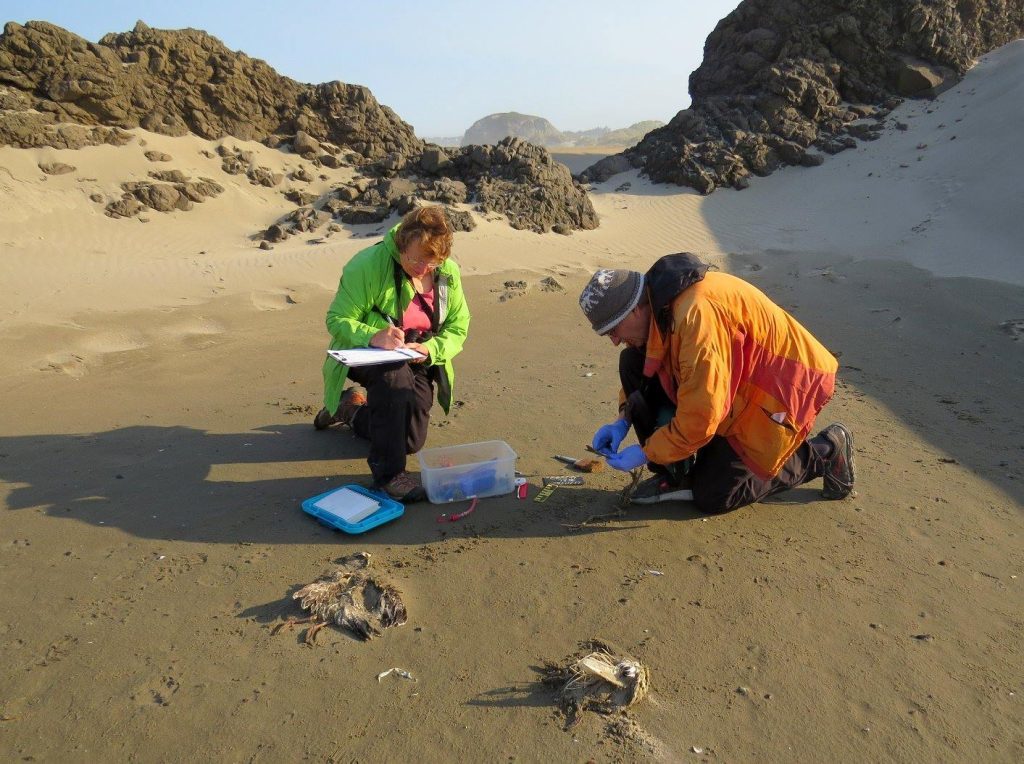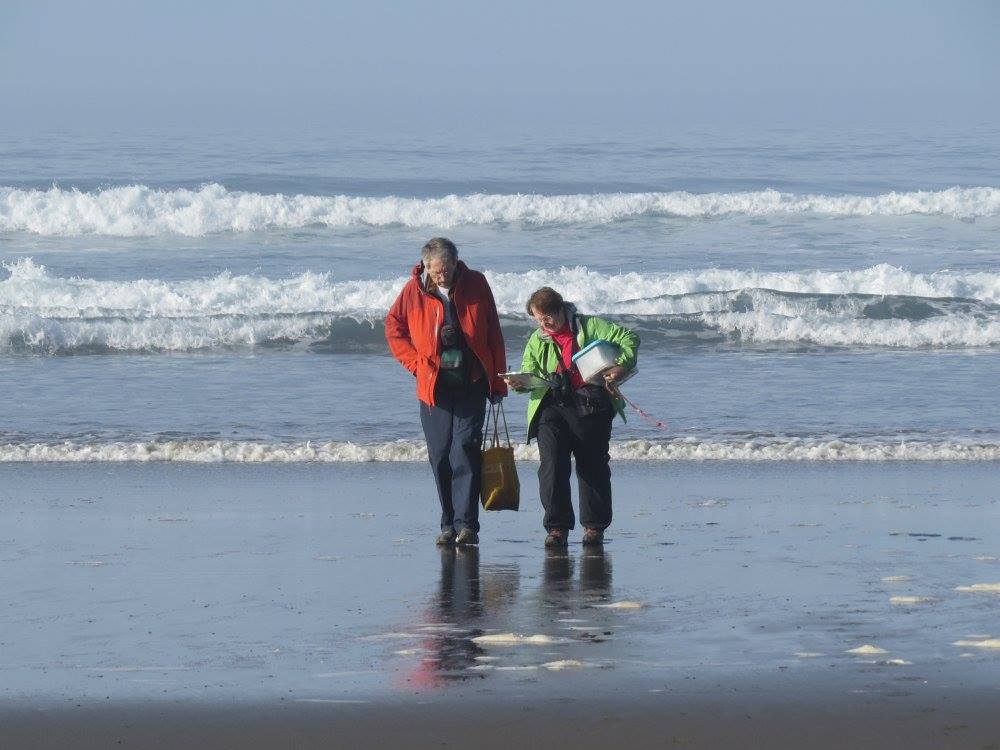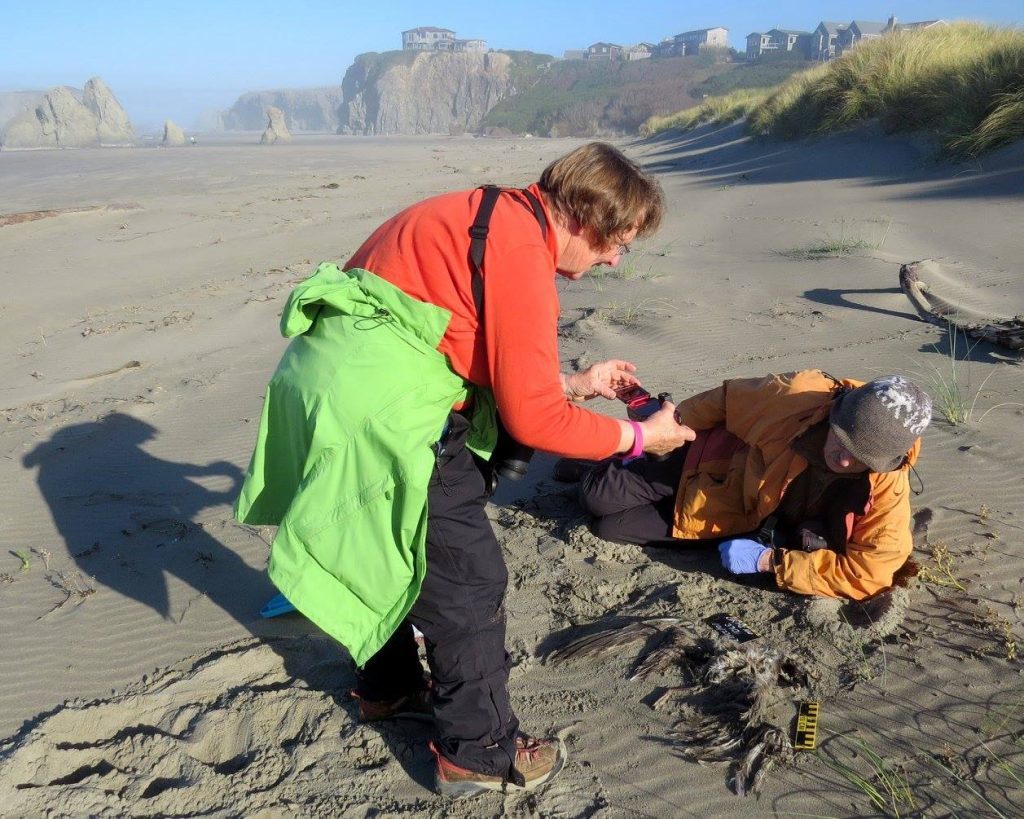by Eric Wagner
Flip through any calendar devoted to Oregon landscapes, and you can be reasonably certain you’ll find somewhere in it a picture of Haystack Rock, usually backlit by a glowing sunset. The 235-foot-tall basalt coastal monolith presides just off of Cannon Beach. With its extensive network of tide pools, as well as the large seabird colony that calls it home in the summers, it is one of the more popular tourist destinations in the state.
But there are actually three official Haystack Rocks along the Oregon coast. One of them happens to be a bit farther south, just offshore of the town of Bandon. Admittedly not quite as picturesque as its northern namesake, this Haystack is 105 feet tall, tabular, and inaccessible from shore. It is, however, the Haystack that marks Diane and Dave Bilderback’s survey beach: OR Mile 99.
“We live just up the hill from our beach,” Diane says. “When we walk down to it, we are within maybe fifty yards of the beginning of our survey. It’s very convenient.”
Diane and Dave have been COASST volunteers since 2005. Theirs was an accidental introduction. They had retired to the coast from Montana, and were volunteers with CoastWatch, a citizen-science program that asks people to track the general condition of a mile of beach. They were looking one day at a CoastWatch notice board when they saw that Julia Parrish would be in Florence giving a COASST training. “It sounded fun, but we had a guest and couldn’t go,” Diane says. Her mother went instead, and ended up joining a survey group. Then, once a month, Diane and Dave would drive up to Florence to help with her mother’s survey. It was a kind of trial by fire. “Our first time we had forty-eight birds,” Diane remembers. “It was the summer in which there were huge numbers of common murres.” (You can read more about the 2005 die-off here and here.)
The Bilderbacks would eventually get a beach of their own closer to home, but they remained no strangers to die-offs and dead birds. “We’ve had over fourteen hundred specimens I think since we’ve been surveying,” Diane says. The species have run the gamut: Common Murres, Cassin’s Auklets, Northern Fulmars, Rhinoceros Auklets. But for the Bilderbacks, these encounters are as invigorating as they are occasionally disheartening. “When you’re down on the beach and you’re looking for birds,” Diane says, “you see things that you never get to see just walking on the beach.”
Bandon is, like Cannon Beach, a popular tourist destination (“maybe not so much in the winter,” Diane says), and the Bilderbacks have regular chats with interested passers-by when they are measuring carcasses. One of the things I don’t think the lay public understands is how important a baseline is,” she says. COASST gives her a chance to explain that importance. “You start the conversation,” she says. “You tell them, ‘If a ship were to come ashore and start to oil birds, we would have a baseline that would show you about how many birds would come ashore in that month.”
For Diane, who grew up in Creswell in central Oregon but spent many of her summers near Bandon, this ethic of attention is one her favorite things about COASST. It is something she tries to pass along. “By going out there regularly,” she says, “you can see the cycles, you really understand what the beach goes through.”



